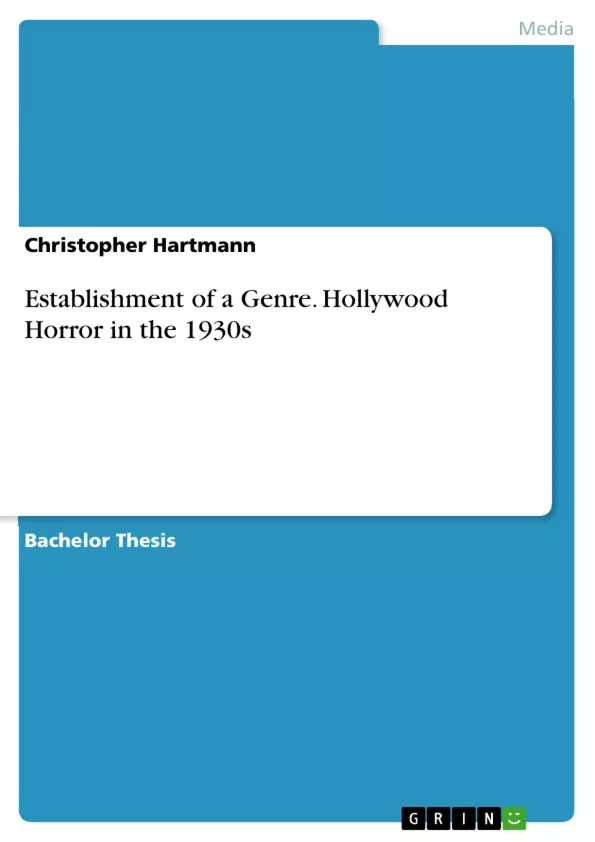This dissertation will examine film genre and in particular the Horror genre during the 1930s. The question of what defines the genre and how it becomes defined is brought up and in answering it I will look upon the themes and the history surrounding some of the biggest pictures of the decade. Much of the studies into genre, had been previously been rather broad and even the ones that focused upon the horror genre, they too lacked the focus solely towards the Horror genre in the 1930s. This piece, analyses the horror genre of the 1930s with use of genre theory and also the thematic structure and historical information regarding the films.
The study presents that the Horror genre is defined by the era, with the 1930s and the issues surround the decade structuring and influencing the genre, from the advancements in technology to the importance of social commentary within the Horror genre. The study elaborates that particular issues and political matters found their way into the genre and helped to define and structure the genre.
Inhaltsverzeichnis (Table of Contents)
- Introduction
- Chapter One
- Review of literature
- Chapter Two
- Horror moves into Hollywood in the 1930s
- Chapter Three
- Gender and Sexuality in the 1930s Horror genre
- Chapter Four
- The Politics of the 1930s Horror genre
Zielsetzung und Themenschwerpunkte (Objectives and Key Themes)
This dissertation aims to explore the Horror genre during the 1930s, specifically analyzing its defining characteristics and evolution. By examining the themes and historical context of significant films from this period, the study seeks to demonstrate how the genre reflects and is influenced by the socio-political climate of the 1930s. Key themes and ideas explored within the dissertation include:- The definition and evolution of the Horror genre in the 1930s
- The impact of technological advancements on the Horror genre
- The role of social commentary within the Horror genre
- The intersection of gender, sexuality, and politics in the Horror genre of the 1930s
- The influence of historical events and societal issues on the development of the Horror genre
Zusammenfassung der Kapitel (Chapter Summaries)
- Chapter One: This chapter provides an overview of existing literature on the Horror genre, highlighting the limitations of previous studies that did not specifically focus on the 1930s. It establishes the theoretical framework for the dissertation, drawing upon genre theory to analyze the Horror genre of the 1930s.
- Chapter Two: This chapter delves into the emergence of the Horror genre in Hollywood during the 1930s, examining the impact of historical and technological advancements on its development. It analyzes specific films and explores how they reflected the anxieties and social changes of the era.
- Chapter Three: This chapter focuses on the representation of gender and sexuality within the 1930s Horror genre. It examines how these themes are explored in films, considering the social and cultural context of the time.
- Chapter Four: This chapter analyzes the political dimensions of the Horror genre in the 1930s. It explores how films reflected and engaged with contemporary political issues, examining the genre's potential for social commentary.
Schlüsselwörter (Keywords)
This dissertation explores the Horror genre during the 1930s, with a particular focus on its evolution and development. Key terms and concepts explored include: genre theory, social commentary, historical context, technological advancements, gender representation, sexuality, politics, and 1930s cinema.- Quote paper
- Christopher Hartmann (Author), 2011, Establishment of a Genre. Hollywood Horror in the 1930s, Munich, GRIN Verlag, https://www.grin.com/document/207706



